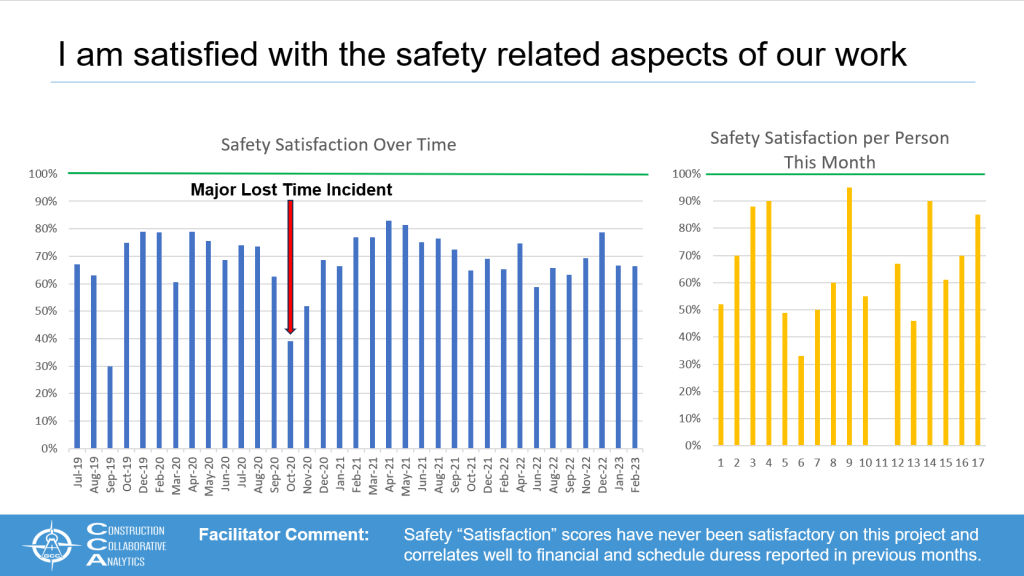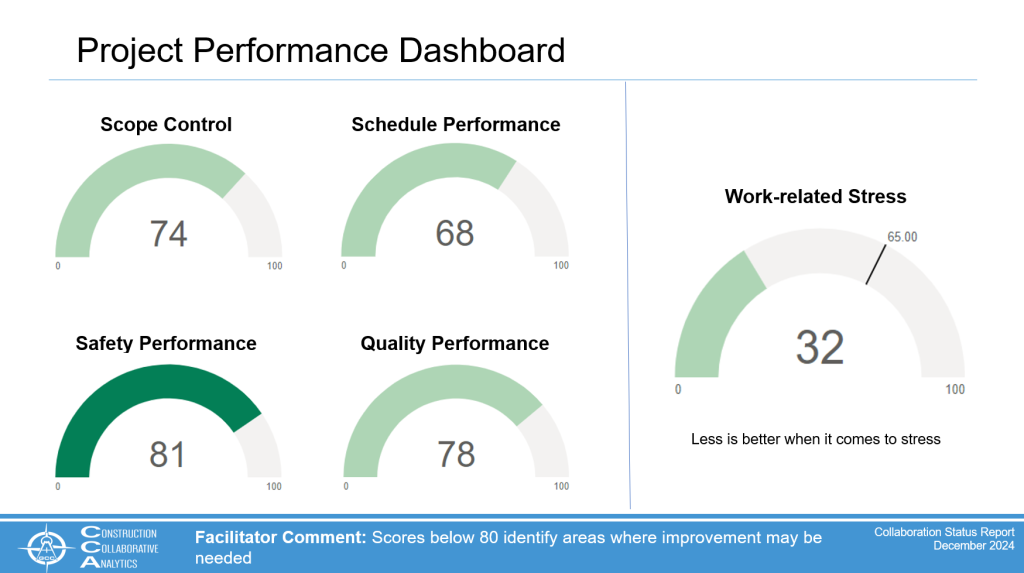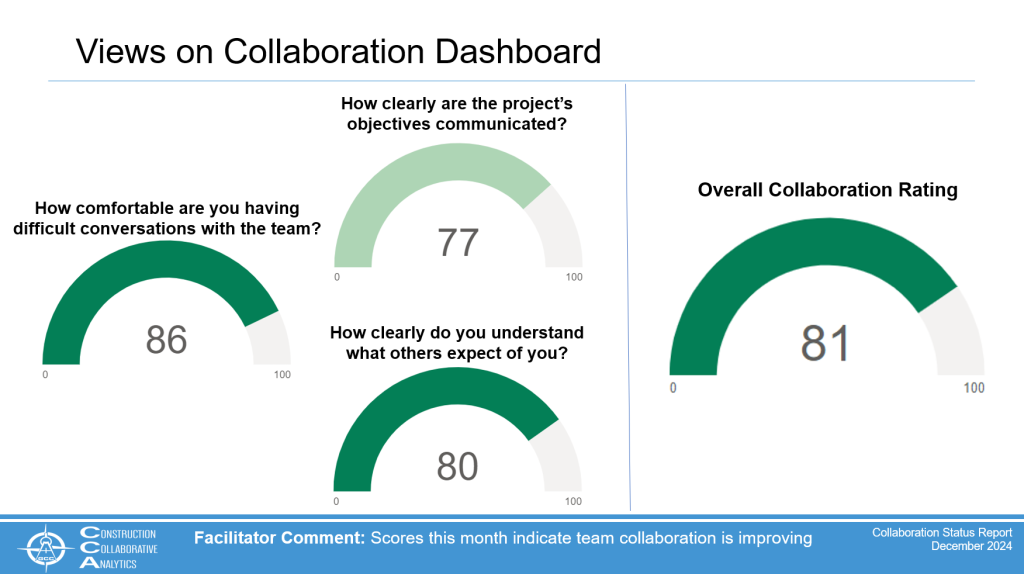
In construction project delivery, Construction Collaborative Analytics involves the collective analysis of both subjective and objective data and insights from key stakeholders within design and construction teams, enabling informed decision-making, planning efficiency, strategic communication, and overall project success.
The core principle of Construction Collaborative Analytics™ lies in its ability to bring together diverse expertise and perspectives, leveraging data-driven insights to inform critical decisions both before and throughout a project’s lifecycle. This collaborative framework involves owners, architects, engineers, contractors, project managers, and supporting key stakeholders working together seamlessly, facilitated by advanced analytics tools and technologies.
Since 2017, GCC has been collecting collaborative data on a monthly basis from capital delivery teams in healthcare, municipal, correctional, secondary and higher education, transportation and diplomatic markets informed by delivery teams working world-wide. This data includes subjective stakeholder insights in areas including risk, cost certainty, schedule duress, worker safety, quality performance, and work-related stress (Figure 1).

Figure 1 – Leveraging the data collected by our Construction Collaborative Analytics™ approach, a serious incident was predicted by our facilitation team and communicated to the client days before a project Lost Time Incident was experienced.
Key Components:
Benefits:
Informed Planning and Decision-Making – Construction Collaborative Analytics™ empowers construction project teams with data-driven insights, facilitating more informed planning and strategic decision-making at every stage of the project.
Data Driven Risk Management – By combining and correlating both objective and subjective data, Construction Collaborative Analytics™ contributes to the development of risk mitigation actions within construction project delivery teams, including risks to cost, safety, schedule, quality and work-related stress (Figures 2, 3, 4).

Figure 2

Figure 3

Figure 4 – CMAA Interactive Survey, Washington DC, 2023 (GSA, VA CFM, Dept. of State, Architect of the Capitol, Smithsonian Institution)
GCC & Associates LLC
4199 Campus Drive, Suite 210
Irvine, California 92612
“Successful teams include skilled technical professionals working intimately with informed and trusting clients – nurturing these relationships is our sole mission.”
GCC & Associates LLC (GCC) is a Service Disabled Veteran Owned Small, Minority, and Disadvantaged Business Enterprise
DUNS: 116586068 UEI: PHKLYPK2MMKS

Copyright © 2022. All Rights Reserved.